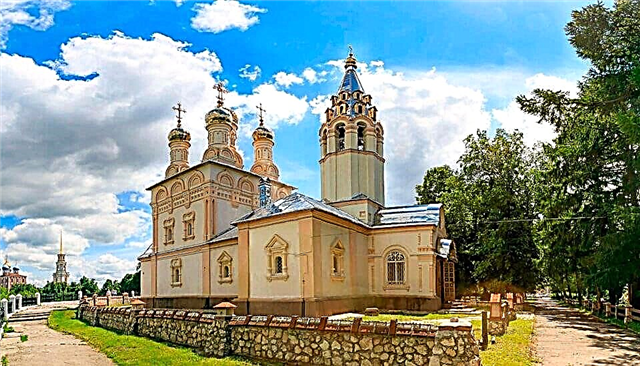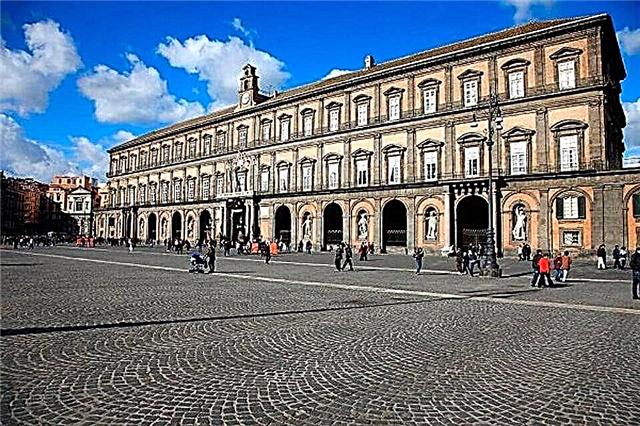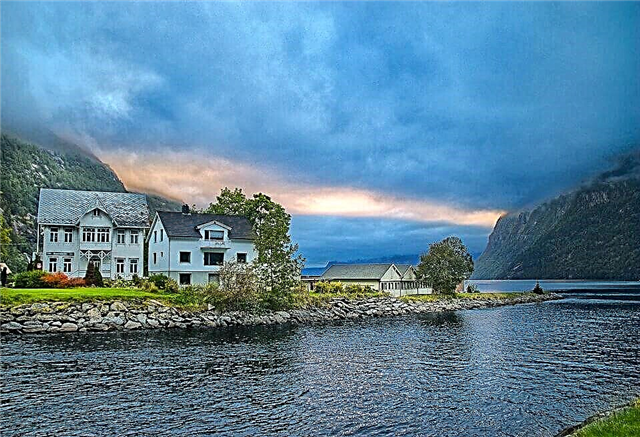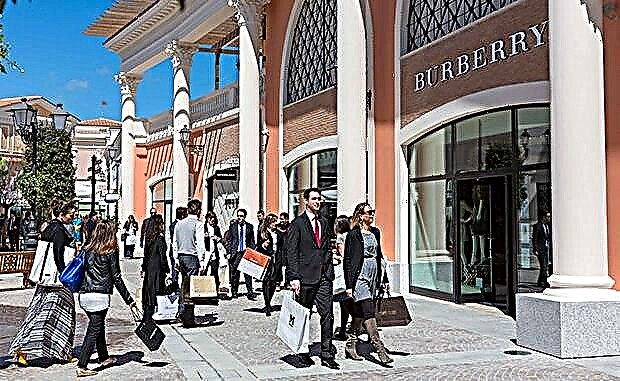Address: Hungary, city of Pannonhalma
Foundation date: 996 year
Main attractions: Basilica of Saint Martin, Library, Refectory, Chapel of the Virgin, Botanical Garden and Nursery, Winery
Coordinates: 47 ° 33'09.6 "N 17 ° 45'39.6" E
Content:
A couple of dozen kilometers from the Hungarian city of Gyёрr, on the hill of St. Martin, there is an old monastery - Pannonhalma Abbey. In 1996, when the Catholic monastery turned 1000 years old, UNESCO included it in the World Heritage List. On the territory of the Benedictine abbey, beautiful temples and other monuments have been preserved that have absorbed the architectural traditions of different eras. In size, this Hungarian monastery is second only to the abbey in the Italian town of Montecassino.

Bird's eye view of the abbey
Abbey history
The monastery in Pannonhalma is the oldest in Hungary. Benedictine monks arrived here in 996 during the reign of Prince Gez, who was the father of the first Hungarian king, Saint Stephen. They baptized Hungarians, founded the first school, copied old books and began to compose the first written documents in Hungarian. In 1001, the first Romanesque chapel was consecrated on the territory of the monastery.
Throughout history, the abbey has played the role of a center of education and monastic life in Central Europe, and sacredly preserved Catholic traditions. The Benedictines attached great importance to education, and the image of the expanded book became part of the coat of arms of the abbey.
In the 16th century, the monastery assumed the status of an arch-abbey. During this period of history, the Hungarian lands, like a large part of Europe, were under the threat of the Ottoman invasion. To save the shrines, they were surrounded by fortress walls, and the abbey turned into a powerful fort. However, despite the measures taken, in the 16th and 17th centuries, Turkish invasions forced the monks to leave the monastery. Each time the monastery was plundered, and some of the adjustments were destroyed.
Restoration work and the construction of new buildings became possible only in the first third of the 18th century, when the Ottoman rule in the country came to an end. At this time, new buildings were built in the Baroque tradition, but the bell tower and the library of the monastery were erected in the style of early classicism.

View of the abbey from the town of Pannonhalma
When the Second World War was going on, the employees of the Red Cross Society hid Jews from the Nazis within the walls of the Benedictine monastery. In 1945, when the pro-communist regime came to power in the country, the monastery was closed. The school in which the Benedictines taught also ceased to exist. In the 1990s, Hungary left the camp of the socialist countries. The monks returned to the abbey, they resumed their studies at the Benedictine College, and the territory of the monastery was thoroughly restored.
The abbey today
One of the main attractions of the abbey is the Basilica of St. Martin. The most visitors come to this temple. The construction of the basilica began in the XIII century, and the reconstruction of this building took place over seven centuries. The most ancient part of the temple is the early Gothic crypt - an underground temple, where burials are held to this day. Experts believe that the crypt was erected in the XII century, and the building of the bell tower was added to the temple much later - in the XIX century.
Inside the basilica, you can see a gilded altar, exquisite stone carvings, multicolored stained glass windows and frescoed star-shaped vaults. The south portal of the church is made of sandstone and red marble. All interiors were restored anew after the Ottoman Turks left the country - in the 18th-19th centuries.

Bell tower of St. Martin's Basilica
A baroque refectory appeared in the monastery also after the liberation of the country from the Ottomans, in the 1720s. It is interesting not only for its appearance, but also for its magnificent paintings. The frescoes on the walls of the refectory were made by the famous Swiss master of the 18th century David Fossati. Thematically, all written biblical scenes are associated with eating and eating. On the ceiling of the refectory, frescoes are visible, the protagonist of which is King Stephen I.
Around the same time as the refectory, the chapel of the Virgin was built in the abbey. Initially, this temple was intended for guests of the monastery and residents of the surrounding Catholic parishes, and monks were buried in its crypt. Today, inside the chapel, you can see a small 18th century organ and three graceful baroque altars.
The monastery has the richest library - one of the largest collections in Hungary, which contains more than 360,000 books. The building of a unique book depository was built in the 20s of the 19th century. Two floors of the library are lined with massive oak cabinets with rare editions, historical documents and manuscripts. Among them, a special place is occupied by the Charter of the Tihany monastery of Benedictines - the oldest written document discovered on the territory of Hungary and dated 1055. The doors of the library cabinets are instructed with beautiful ornaments, and the high vaults of the rooms are decorated with frescoes. In one of the library rooms, you can see a large old globe.

Main entrance to the abbey
In front of the entrance to the book depository, there is a sculpture of a young man who is bent over a desk. This expressive image is not accidental. In the Middle Ages, a male school worked at the monastery, where young people had the opportunity to receive a secular and theological education. Teaching at the Benedictine College continues today. Most of its graduates devote their lives to church service.
Another monument, located in the abbey, is dedicated to the 1000th anniversary of the founding of Hungary. He appeared here in 1896.
Since 1820, a beautiful botanical garden has been laid out on the territory of the monastery, which is called the "Tree nursery". About 400 species of trees, shrubs and herbaceous plants are grown here.
Wine traditions
At the monastery on an area of 37 hectares, for many centuries grapes have been grown and wine that tastes great. It is believed that the culture of vine cultivation was introduced to the territory of Hungary by the Romans. Local winemaking traditions have existed since the founding of the abbey and were interrupted only between 1945 and 1990 by the decision of the Hungarian authorities. At this time, the vineyards were nationalized. After a break, the tradition of winemaking was resumed, and in 2003 the monks produced the first wine. The coat of arms of the monastery is decorated with a bunch of grapes.

Library building
Today, in addition to extensive vineyards, the monastery contains a profitable winery, which has an area of 2 thousand square meters. m. Wines "Tramini", "Rajnai Rizling", "Sauvignon Blanc", "Pinot Noir", as well as liqueurs "St. Martinus, Tricollis, Hemina and Infusio, which are very popular with locals and tourists.
Tourists visiting the abbey
The abbey has the status of a functioning male monastery. Monks live here, and therefore not the entire territory of the monastery is accessible for inspection. In 2004, 47 Benedictine monks lived in the monastery, 14 of whom were clergy. Monks serve in 15 nearby Catholic parishes, teach at the Benedictine College, tend the plants at the Arboretum, and grow grapes.
Tourists visit the abbey every day, coming here on their own and as part of organized excursions. Visitors are accepted from 9.00 to 19.00, and museums are open until 16.00. If desired, guests of the abbey can use audio guides, including in Russian.
In the monastery it is interesting to hear an organ concert and performances by monks and boys' choirs. Here you can visit the art gallery, see the collections of ancient coins and stroll through the territory of the botanical garden. The monastery also has a shop serving local wines, wine vinegar, herbal teas, aromatic oils and lavender.Visiting the territory of the abbey is free, and visiting the museums is paid.

Vintage globe in the abbey library
How to get there
The abbey is located in the small town of Pannonhalma, in the northwestern part of Hungary. The territory of the monastery occupies the top of a hill 282 m high. The nearest town of Gyor is 20 km away from the monastery. Buses and trains run to Gyёрr from the capital of the country - Budapest.
You can get from Gyor to the monastery by bus, which departs several times a day from the city bus station. Another option is to come to the abbey by train. You need to get off at the Pannonhalma station, which is located at a distance of 2 km from the monastery. From here you can get to the abbey on foot or by taxi.











